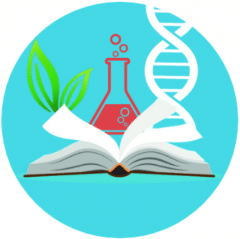Mollusks

All Materials © Cmassengale
Phylum Mollusca
Characteristics
- Soft-bodied invertebrate covered with protective mantle that may or may not form a hard, calcium carbonate shell
- Includes chitons, snails, slugs, clams, oysters, squid, octopus, & nautilus
- Second largest animal phylum
- Have a muscular foot for movement which is modified into tentacles for squid & octopus
- Complete, one-way digestive tract with a mouth & anus
- Have a fully-lined coelom
- Cephalization – have a distinct head with sense organs & brain
- Have a scraping, mouth-like structure called the radula
- Go through free-swimming larval stage called trochophore

Trochophore Larva
- Body organs called visceral mass lie below mantle
- Have circulatory, respiratory, digestive, excretory, nervous, & reproductive systems
- Bilaterally symmetrical
- Most have separate sexes that cross-fertilize eggs
- Gills between the mantle & visceral mass are used for gas exchange
- Includes 4 classes — Polyplacophora (chitons), Gastropoda (snails, slugs, nudibranchs, conchs & abalone), Pelecypoda or Bivalvia (clams, oysters, & mussels), & Cephalopoda (squid, octopus, & nautilus)



SNAIL, CLAM, CHITON, & SQUID
Class Polyplacophora
Characteristics
- All marine
- Have a shell divided into 8 over-lapping plates
- Live on rocks along seashore feeding on algae

CHITON
![]()
Class Gastropoda
Characteristics
- Head has a pair of retractable tentacles with eyes located at the ends
- Have a single shell or valve (snails) or none (slugs)
- Known as univalves
- Snails
* May be marine, freshwater, or terrestrial
* Aquatic snails breathe through gills & use their radula to scrape algae for food
* Terrestrial snails use their mantle cavity as a modified lung & saw off leaves
* Retreat into shell in dry periods & seals opening with mucus
* Have open circulatory system
* Secrete mucus & use muscular foot to move
* Land snails are hermaphrodites
* Aquatic snails have separate sexes
* Use internal fertilization

- Slugs
* Live in moist terrestrial areas
* Lack a shell

SLUG
- Pteropods
* Called “sea butterflies”
* Marine
* Have a wing-like flap for swimming

“SEA BUTTERFLY”
- Oyster Drills
* Radula modified to drill into oyster shells

OYSTER DRILL
- Nudibranch
* Marine slug
* Lacks shell

NUDIBRANCH
![]()
Class Bivalvia or Pelecypoda
Characteristics
- Sessile or sedentary
- Includes marine clams, oysters, shipworms, & scallops and freshwater mussels
- Filter feeders
- Have two-part, hinged shell (2 valves)
- Have muscular foot that extends from shell for movement
- Scallops clap valves together to move

- Shell secreted by mantle & made of 3 layers — outer horny layer protects against acids, middle prismatic layer made of calcium carbonate for strength, & inner pearly layer next to soft body
- Mantle secretes substance called “mother of pearl” to surround irritants like grains of sand
- Oldest, raised part of shell called umbo
- Powerful anterior & posterior adductor muscles open & close shell
- Lack a distinct head
- Have an incurrent & excurrent siphon that circulate water over the gills to remove food & oxygen

INTERNAL CLAM ANATOMY
- Have heart & open circulatory system
- Nervous system made of 3 pairs of ganglia, nerve cords, & sensory cells that detect light, chemicals, & touch
- Separate sexes with external fertilization of eggs

![]()
Class Cephalopoda or Amphineura
Characteristics
- Includes octopus, squid, cuttlefish, & chambered nautilus
- All marine
 |
 |
 |
| NAUTILUS | OCTOPUS | SQUID |
- Most intelligent mollusk
- Well developed head
- Active, free swimming predators
- Foot divided into tentacles with suckers
- Use their radula & beak to feed
- Closed circulatory system
- Lack an external shell
- Highly developed nervous system with vertebrate-like eyes
- Separate sexes with internal fertilization

- Squid
* Largest invertebrate is the Giant Squid
* Large, complex brain
* Ten tentacles with longest pair to catch prey
* Use jet propulsion to move by forcing water out their excurrent siphon
* Chromatophores in the skin can help change squid color for camouflage
* Can squirt an inky substance into water to temporarily blind predators
* Have internal shell called pen
* Female lays eggs in jellylike material & protects them until hatching

GIANT SQUID
- Octopus
* Eight tentacles
* Similar to squid
* Crawls along bottom looking for prey

OCTOPUS
- Chambered Nautilus
* Has an exterior shell
* Lives in the outer chamber of the shell
* Secretes gas into the other chambers to adjust buoyancy

NAUTILUS
Economic Importance of Mollusks
- Used by humans for food
- Pearls from oysters
- Shells used for jewelry
- Do crop & garden damage
- Serve as intermediate hosts for some parasites such as flukes
